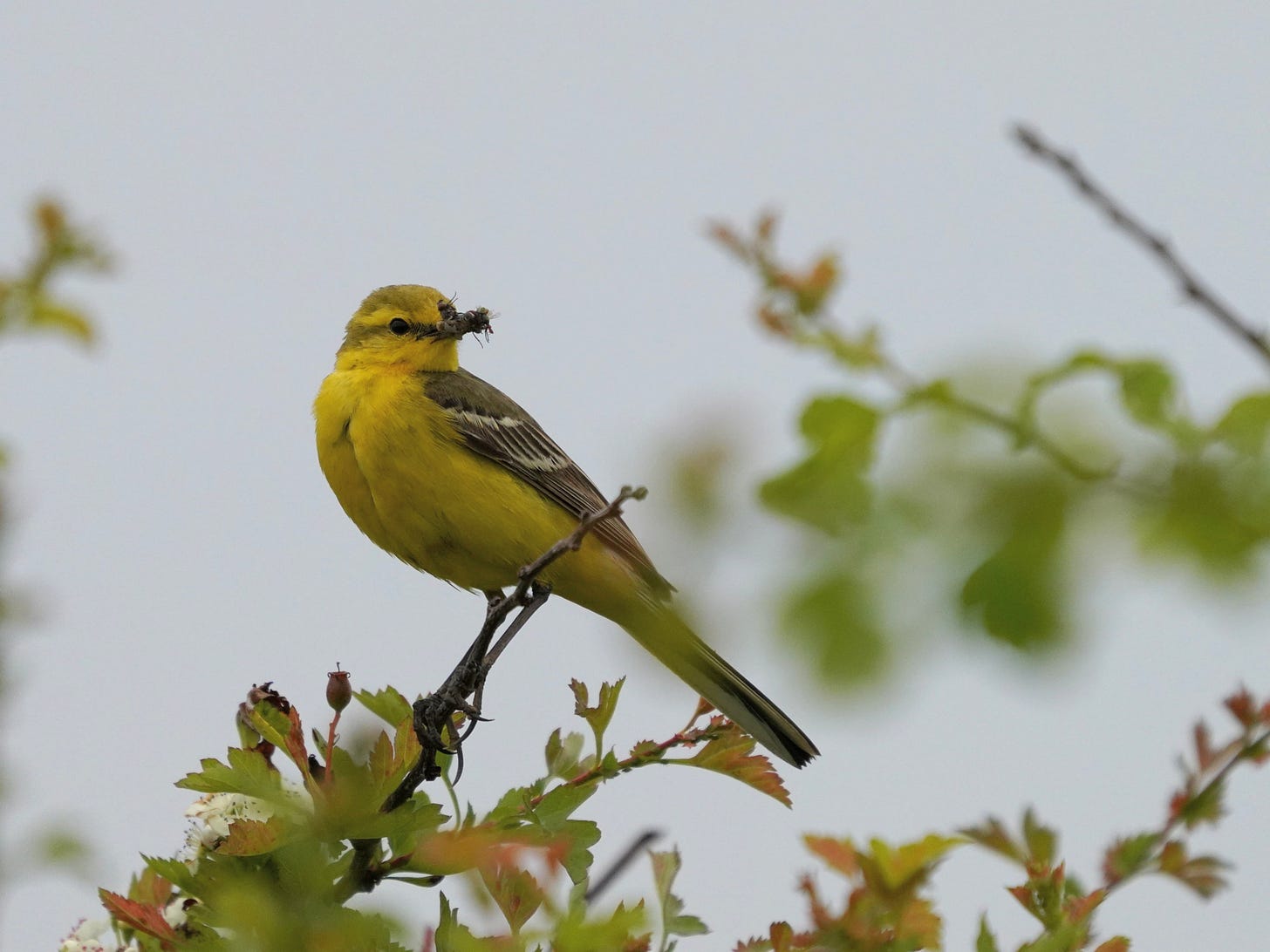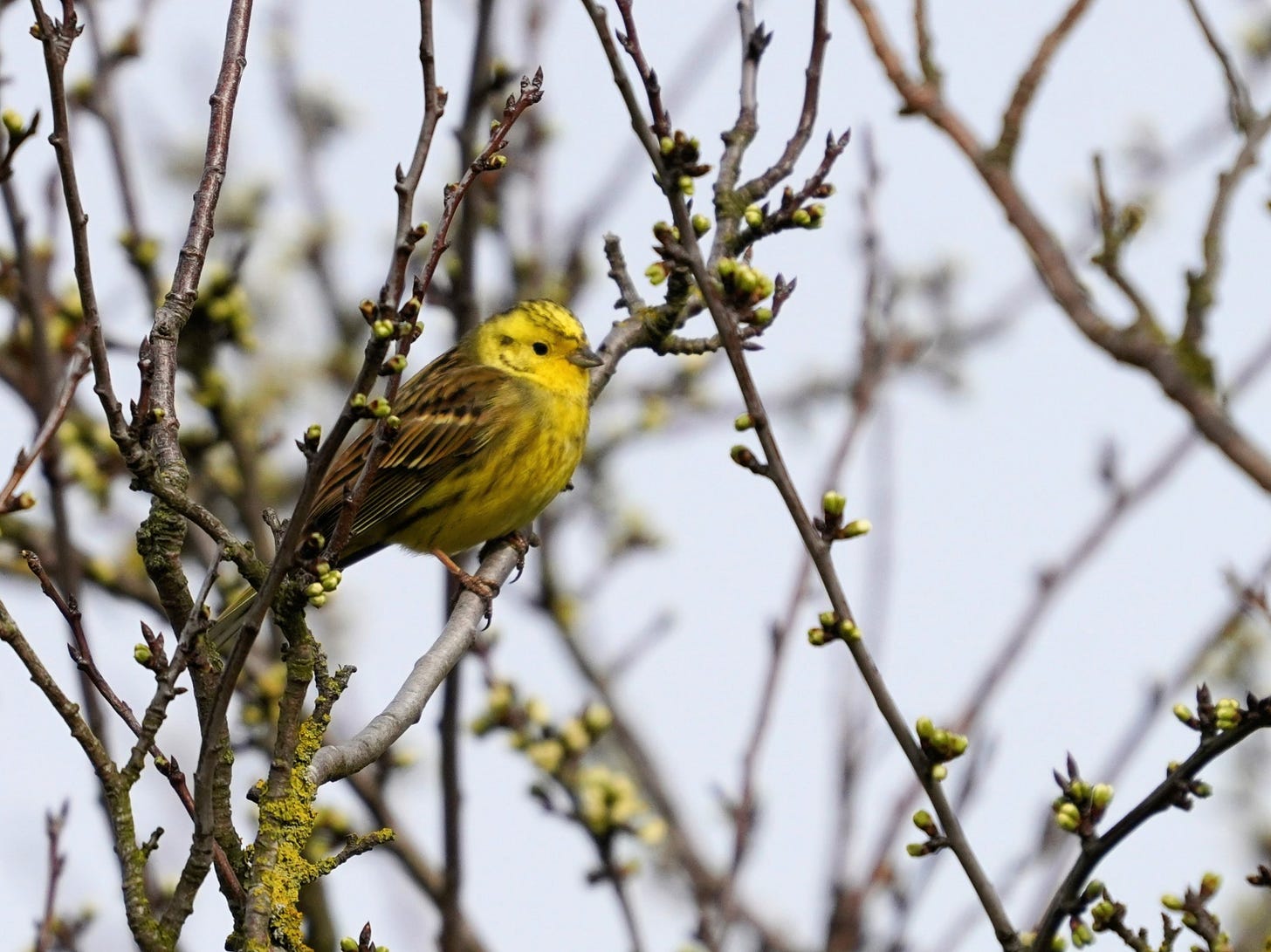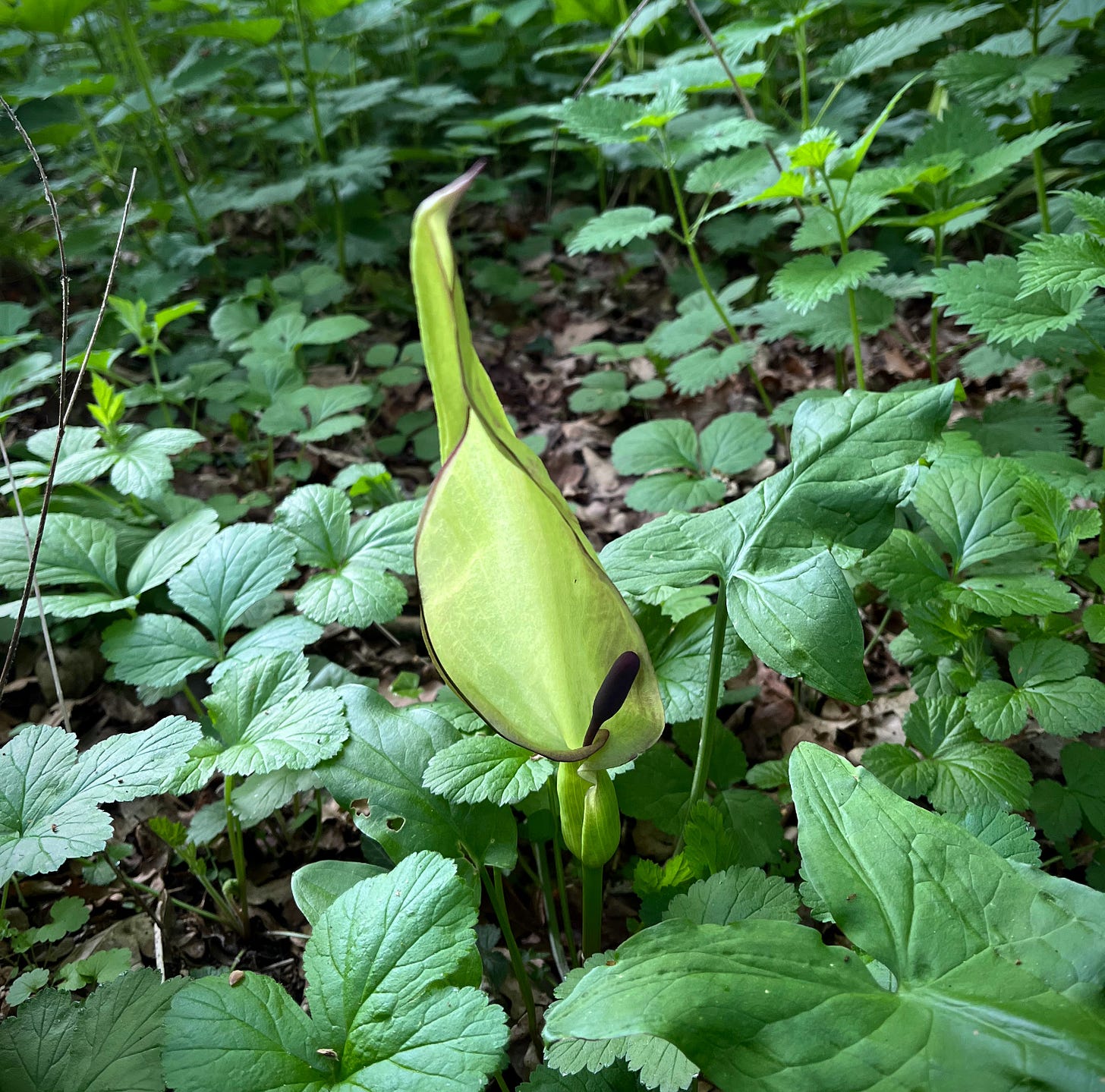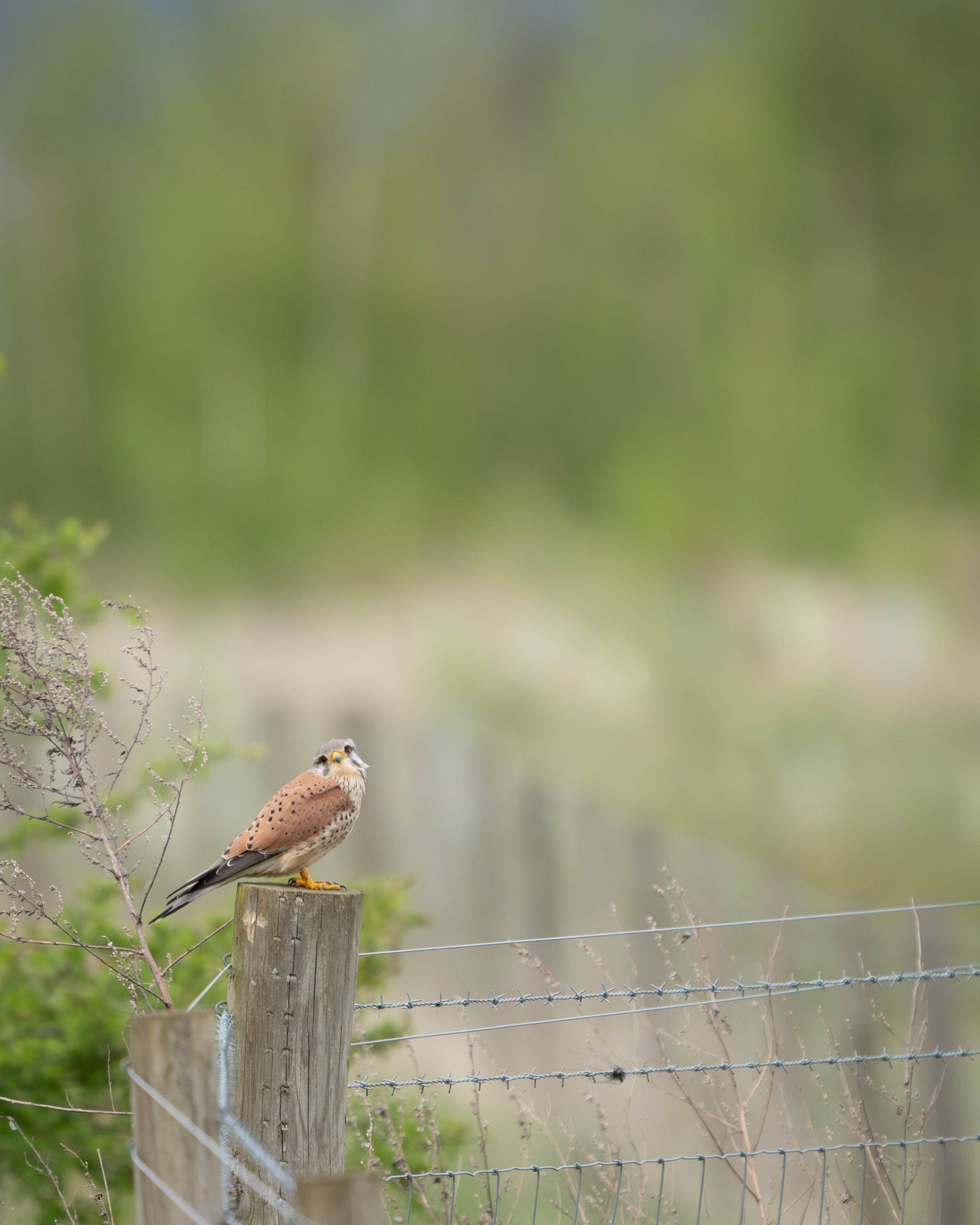This post has been migrated over from my original Substack account. This is its new home, so make sure you’re following me here to stay connected! Some images and other formatting may have been lost in the move – sorry about that.
The ‘false spring’ we had a few weeks ago has finally been replaced by the real thing. The air is warm. The first Cuckoos are calling. They look a lot like Sparrowhawks in flight, with a slightly more ‘pigeony’ chest, and when they land they often sit almost horizontal with their wings folded down at their side, creating a striking angle. Sparrowhawks (or ‘sprawks’ as birders call them) are very upright birds.
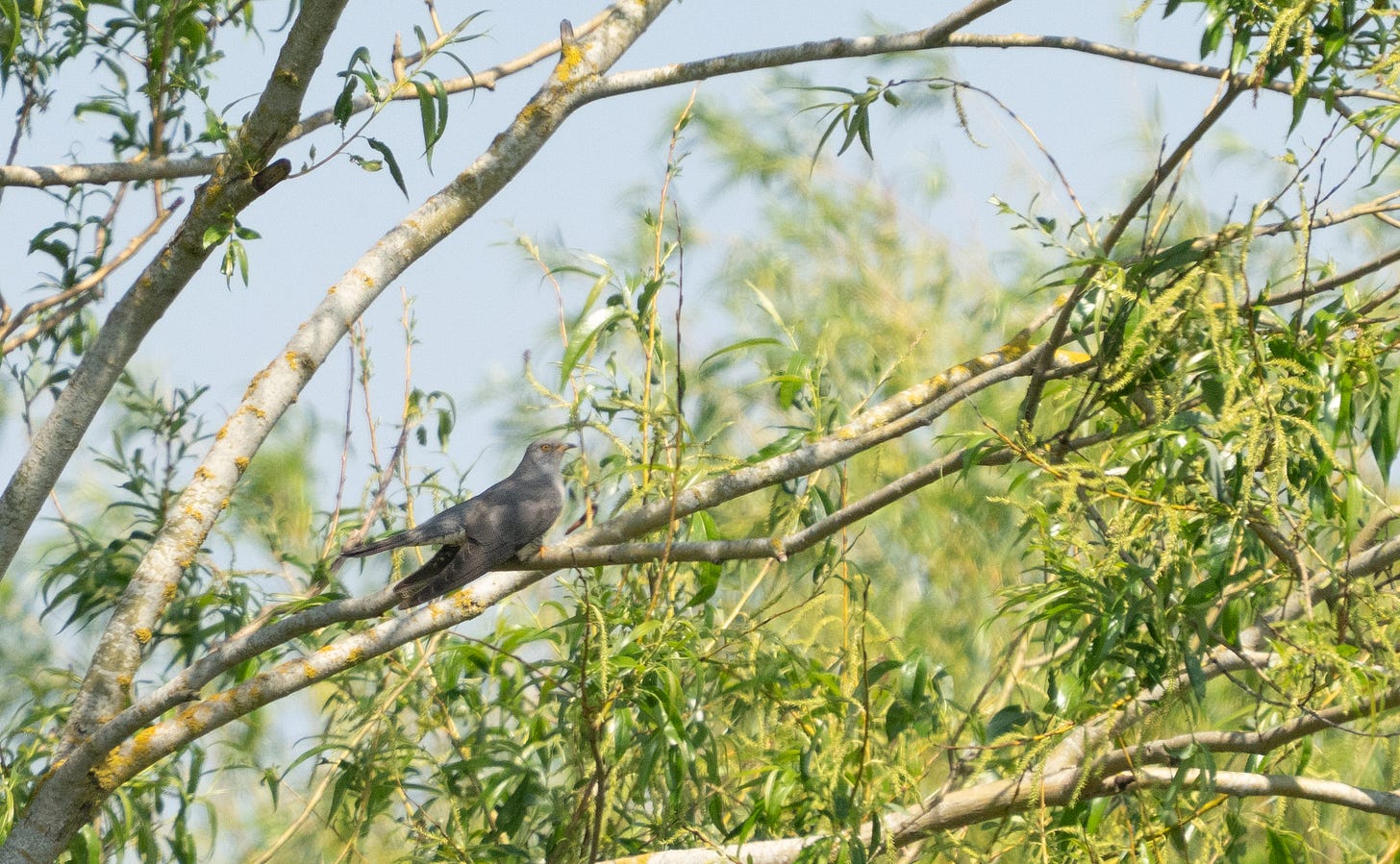
If you want to spot a Cuckoo, head to somewhere with a mixture of reeds and tall willow trees. They particularly enjoy laying their eggs in the nests of Reed Warblers, which seems rather unfair given the size difference. The willows provide a fantastic spot for the males to perch and call from. It can be hard to see them through the foliage, but they’re quite bulky birds so you’re in with a chance.
Basking weather
My local RSPB reserve (Fowlmere, Cambridgeshire) has a small population of Common Lizards. They spend their days sunbathing on a short section of boardwalk – it’s very difficult to spot the first one, but once you do you’ll notice them everywhere! And the beauty of these little scaly creatures is that they stay very still while basking, so you can get some nice photographs even with a mobile phone.
Despite being called the ‘common’ lizard, they’re pretty unusual as lizards go! It’s not that they’re rare – it’s that they are one of only 20% of lizard species that give birth to live young.
The females tend to have a reddish stripe down either side of their body. The one in my photograph is quite small and doesn’t have strong markings yet, but there’s a hint of a stripe so I suspect she’s female. Males are much duller, except for their undersides. Those turn orange in breeding season, but you’re unlikely to catch a glimpse of their tummies.
Have you ever met a ‘book bird’?
I spotted the lizard while looking for a much rarer species, the Wryneck. They’re a strange-looking brown woodpecker that writhes like a snake when caught by a predator (or bird ringer). They only pass through the UK briefly as they migrate, so this one had drawn quite a crowd! Sadly, I did not catch sight of it.
You know how a word you pronounce incorrectly because you have only read it, not heard it, is called a ‘book word’? Well, the Wryneck is something of a ‘book bird’ for me – I was looking for a creature the size of a dove. Turns out they’re closer to the size of a sparrow. Perhaps I did see it, and didn’t even realise!
A streak of summer
Some of my favourite birds are yellow. I thought I had spotted one of our common local Yellowhammers in especially bright plumage this week. But, as it flew, it let out a familiar piercing call, like someone standing on a squeaky dog toy: “squee-squeak, squee-squeak”. The Yellow Wagtails have arrived.
(I actually think it sounds like they’re saying “Pipit, pipit!”, but that’s the name of another type of bird so I try not to confuse myself. A bit like the ducks, Wigeons, who sound like they’re shouting “TEAL!” excitedly. Perhaps they’re just excited to see another type of duck nearby?)
Sadly, these gorgeous birds have seen an immense decline in their numbers in the UK over recent years. Happily, that trend is not repeated across the rest of their range (Europe in summer, tropical Africa and Southern Asia in winter). If you want to see one, they like arable land and will often sit and squeak at the top of hedgerows, and are particularly striking on a grey day.
While we’re on the topic of bird calls that don’t sound quite as described, the Yellowhammer apparently says “A little bit of bread and no cheese”, but I can’t hear it. To me, it sounds more like someone filling up and then emptying a jug: “Glug-glug-glug wheeeeeee”.
Toxic Lords & Ladies
I can’t keep up with the changes happening in the undergrowth on my morning walk. The Cow Parsley has shot up to waist height and has tiny white flowers coming through. These flower heads are a fantastic place to spot various insects and spiders as they feast on the nectar (and each other).
But the star of the wildflower show this week is the Arum Lily, also called ‘Lords & Ladies’ or ‘Cuckoo Pint’. It grows in the shade, often among the Wild Garlic that is now starting to fade after flowering. Arum Lilies are responsible for those spikes with big orange/red berries on the forest floor you’ll spot later in the year, which are great for birds but are very toxic to dogs. The rest of the plant is poisonous and an irritant, too.
They may be deadly, but they are also fascinating! Here’s a step-by-step guide to how they tackle pollination:
The spadex (that dark spike in the centre) lets off a putrid smell and generates heat, which attracts small flies.
The flies enter that big, beautiful curled ‘spathe’ (it looks like a flower, but it isn’t) and fall down into a chamber that contains the true flowers, where they are unable to escape due to downward pointing bristles on all surfaces.
Inside that chamber, the flies eat the secretions produced by the female flowers at the bottom. These stop producing at nighttime, when the male flowers release pollen onto the flies.
The next day, the plant wilts slightly, allowing the flies to escape. Many of these flies will then visit another lily and pollinate it when they enter the chamber, coated in the previous plant’s pollen.
Finally, the spathe dies off and the female flowers turn into the red fruits that I mentioned earlier.
I can’t resist snapping a photo of these when I see them out and about, but I’ve never checked if the ‘putrid smell’ is detectable to the human nose.
Through my lens
Not the sharpest picture, but just look at this smart little bird! This is another summer visitor, the Hobby, and they provide birders with hours of fun. They race around the sky, wheeling and diving, catching dragonflies and other insects, which they eat from their claws while still flying. Mesmerising.
It can be hard to tell them apart from the peregrine falcon, but these are smaller and much slimmer. They also have more pronounced ‘streaks’ down their chest and flanks (sides) and wonderful red ‘trousers’ that you can just about make out in this picture.
They’re a similar size to a Kestrel – and at Fowlmere, I watched a kestrel copying their insect-hunting behaviour with some success. Quite unusual for a kestrel to abandon their characteristic ‘hover then drop’ approach to hunting!
Your turn
I’d love to hear about your encounters with nature, wherever you are in the world. What have you seen this week, while I was rummaging around in the undergrowth looking for lizards and wildflowers?
If this made you smile or inspired you to go looking for nature, a little tap of the ‘Subscribe’ or ‘Like’ buttons goes a long way. Thanks for reading!
Gem



